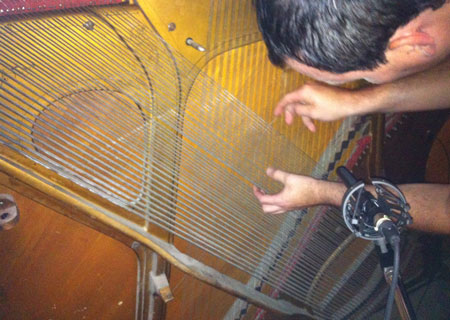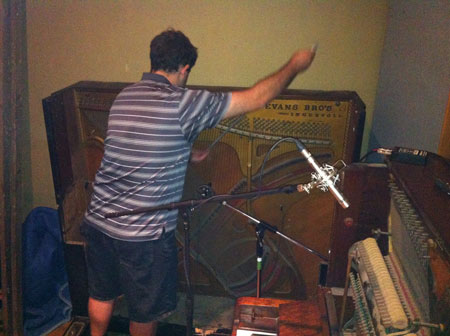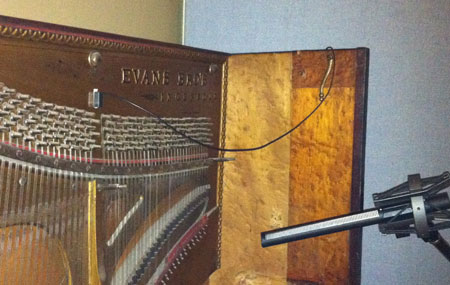Stay Up To Date With Us!
We will never spam you or share your email address.
Game Sound Design Strategies
GSD StrategiesCheck out the gamesounddesign.com strategies when you are feeling creatively uninspired. Each random strategy will present you with a new avenue to pursue. Give them a try!
Game Sound Design Glossary
GSD GlossaryOur game audio glossary has all the sound terms you have been wondering about. Game audio can be confusing enough without having to deal with a new technical language. We are constantly updating the database with new terms that relate to not only game audio but game developer terms as well.
How To: Record A Broken Piano
Article by George Spanos
Creating sound design can mean many things. It can mean arranging real world sounds in such a way as to create a completely new sound, and it can also mean incorporating non typical sounds into a soundscape. Both techniques have their place in the sound designer's toolkit, but sometimes the most fun you can have is by using non-typical sounds to create a mood, or atmosphere.
Creating an atmosphere in your game can be very important. You may find that you need to create a "creepy" or "haunting" soundscape to convey to the player that they are in the midst of danger. A great way to achieve this is by using a piano. And I don't mean playing minor chords either, I mean getting into an old broken down acoustic piano and really using your imagination to come up with some dark tones and sounds.
The versatility of an acoustic piano is immense, and there are many examples of non-traditional use of the piano. John Cage is famous for creating works with a "prepared piano". He would place objects on top of, between, and around the piano strings. This technique would yield brand new sounds not heard before.
The Technique
Sound designers can use John Cage's techniques as well as others when non-traditional sound flavours are required. Hitting the exposed strings with mallets, hammers, and pieces of metal can create some great long resonating tones. Scraping or rubbing metal pieces, bows, or screwdrivers along the strings can produce long and dark resonant tones. Hitting various surfaces inside the piano can also create some great hollow, resonant tones. Plucking the strings with various objects can yield tinny high-pitched "plink" type sounds.

Any type of acoustic piano can be used. We had access to an old beat-up upright that was going to be trashed. In the past I have also recorded the sound of a grand piano by plucking it's exposed strings and running a guitar pick the length of them. If you have access to an old junker piano I highly recommend trying various damaging techniques to see what sort of sounds you can produce. Hitting it with a golf club, crowbar, and even your fist can produce some pretty interesting sounds.
The Gear
As usual, we recorded 2 channels into a Sound Devices 722. We used a Sennheiser 416 and a contact microphone. Surprisingly, the contact microphone did not produce any really usable results. It picked up some low tones when we bashed on the piano with a golf club, but other than that we did not see great results out of the contact mic. No problem though, as the 416 shotgun mic picked up all of our efforts.

The Results
We were able to capture some fantastic low resonant tones, high pitched squeals, and long vibrating noises. These will be perfect for setting the mood in a dark and lonely environment. Accenting the gameplay with a few choice prepared piano tones can do amazing things. Honestly, you can never have enough of this stuff.
A lot of the material we recorded will also be used to blend into other sounds to create completely new ambient works and form the basis of any constant tones (try time stretching some of your results), and not to mention be used as subtle accent hits in specific sections of gameplay.

I highly recommend you try recording some prepared piano and building up your library with some of the sounds that it can produce. Many of the sounds you will create can even be used in your music productions, film productions, and if you do art installations, prepared piano can be a treasure trove of found sound.
Check out the video and sound examples to follow and let me know what you think in the comments below!
The audio in this video is from the camera only.

